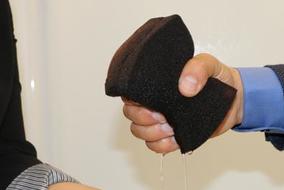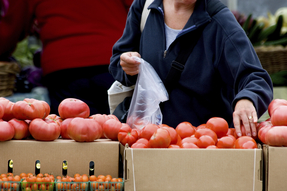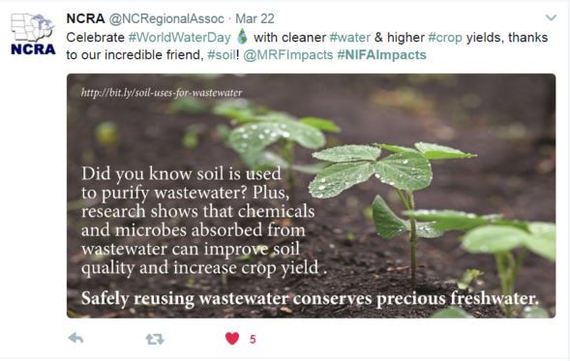|
|
|
Fresh from the Field is a weekly album showcasing transformative impacts made by grantees funded by the National Institute of Food and Agriculture.
March 30, 2017
|
|
 Super sponge removes mercury from water
Mercury is very toxic and can cause long-term health
damage, but removing it from water is challenging. With NIFA funding, researchers at the University
of Minnesota (UMN) created a sponge that uses nanotechnology to absorb mercury from polluted water in seconds. The sponge can be used on tap water, industrial
wastewater, and in lakes. It converts contaminants into nontoxic waste that can be disposed in a
landfill. The sponge also kills bacterial and fungal microbes.
Read the UMN story here
|
 Wasp used to combat stink bugs
The brown
marmorated stink bug (BMSB) is an invasive pest that continues to expand its range throughout the United States. Scientists at Oregon State
University have discovered a way to safely contain the population with funding from NIFA's Specialty Crop Research Initiative (SCRI). Researchers identified a natural predator, the trissolcus
japonicus parasitoid wasp, which eats stink bug eggs. They monitored these wasps, found in Maryland and the Pacific Northwest, to determine if they could control the stink bug population without harming other species.
“Our
original project was to put out the fire and identify insecticides that were
effective so our growers would able to mitigate the problems caused by these
bugs. But of course, they are all broad spectrum and disruptive to our integrated pest management systems, so we ended up with secondary pest problems,” said Tracy Leskey, entomologist
for the USDA's Agricultural Research Service.
So far, 10 wasps have been released in various locations and further studies will be
conducted this summer to measure the impact on the BMSB population and other insects.
Read more
about the wasp story here.
|
 The wallet and the food desert
An Agriculture and Food Research Initiative (AFRI) research project to North
Carolina State University found that money, not access, is the biggest factor determining food purchases for people who live in areas far from supermarkets, also known as "food deserts."
Researchers found that, while supermarkets had a wide range of
fruits and vegetables, neighborhood stores offered little or no fresh produce.
What’s more, staple foods and healthier options in neighborhood stores cost 25 percent more on average.
Read more
about the food desert study here.
|
News Coverage
 Smaller cattle for a dry landscape
Ranchers
running beef cattle on dry and dusty landscapes should consider smaller cows to
get the best out of their herd according to researchers at Oregon State University, University of Wyoming and Oklahoma State University.
With funding from NIFA's Agriculture and Food Research Initiative (AFRI), scientists developed a statistical model that showed smaller cows have distinct advantages over larger ones in pastures where the cows don't have much to chew on.
Breeding
smaller cattle could be a long-term strategy to help ranchers and ease
pressure on an increasingly drought-prone range, noted Leticia Henderson, a
livestock and range Extension agent at Oregon State University.
Read Oregon State University's story here.
|
Video
 Prototype farm machine reduces labor costs
With a Sustainable Agriculture Research and Education (SARE) grant, University of Kentucky researchers have
designed, built and tested a low-cost, mechanized system for organic vegetable
production. This new system can help small-scale growers reduce their labor costs, increase their
scale of operations, reduce input costs and increase production compared to
conventional organic production practices.
Watch video here.
|
Tweet of the Week
#NIFAIMPACTS

|
|

For more NIFA Impacts, visit nifa.usda.gov/impacts or the Land-Grant University Impacts website. Send us your NIFA-funded impacts at impactstories@nifa.usda.gov or share them with USDA_NIFA on Twitter #NIFAimpacts.
NIFA invests in and advances agricultural research, education, and extension and promotes transformative discoveries that solve societal challenges.
Fresh from the Field is a weekly compendium of news and information that may be of interest to land-grant and non-land-grant universities, NIFA stakeholders, and other subscribers.
Editor: Falita Liles; Co Editor: Carlos Harris
|
|